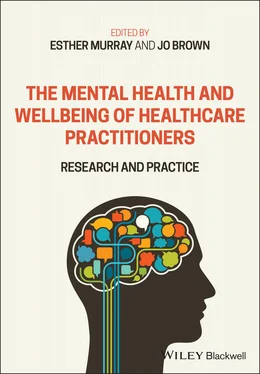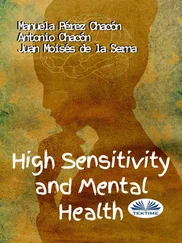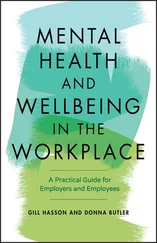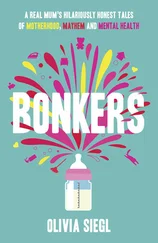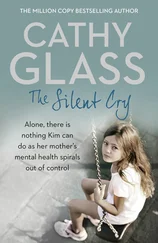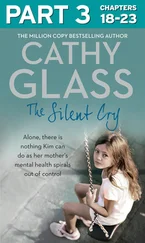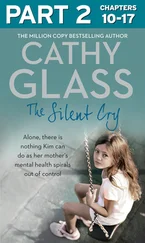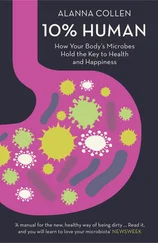The Mental Health and Wellbeing of Healthcare Practitioners
Здесь есть возможность читать онлайн «The Mental Health and Wellbeing of Healthcare Practitioners» — ознакомительный отрывок электронной книги совершенно бесплатно, а после прочтения отрывка купить полную версию. В некоторых случаях можно слушать аудио, скачать через торрент в формате fb2 и присутствует краткое содержание. Жанр: unrecognised, на английском языке. Описание произведения, (предисловие) а так же отзывы посетителей доступны на портале библиотеки ЛибКат.
- Название:The Mental Health and Wellbeing of Healthcare Practitioners
- Автор:
- Жанр:
- Год:неизвестен
- ISBN:нет данных
- Рейтинг книги:3 / 5. Голосов: 1
-
Избранное:Добавить в избранное
- Отзывы:
-
Ваша оценка:
- 60
- 1
- 2
- 3
- 4
- 5
The Mental Health and Wellbeing of Healthcare Practitioners: краткое содержание, описание и аннотация
Предлагаем к чтению аннотацию, описание, краткое содержание или предисловие (зависит от того, что написал сам автор книги «The Mental Health and Wellbeing of Healthcare Practitioners»). Если вы не нашли необходимую информацию о книге — напишите в комментариях, мы постараемся отыскать её.
Explore this innovative new volume covering the growing mental health crisis amongst healthcare practitioners The Mental Health and Wellbeing of Healthcare Practitioners
The Mental Health and Wellbeing of Healthcare Practitioners
The Mental Health and Wellbeing of Healthcare Practitioners — читать онлайн ознакомительный отрывок
Ниже представлен текст книги, разбитый по страницам. Система сохранения места последней прочитанной страницы, позволяет с удобством читать онлайн бесплатно книгу «The Mental Health and Wellbeing of Healthcare Practitioners», без необходимости каждый раз заново искать на чём Вы остановились. Поставьте закладку, и сможете в любой момент перейти на страницу, на которой закончили чтение.
Интервал:
Закладка:
Example 2 Exploring the Creative Arts in Health and Illness
For the last 15 years I have been running and co‐facilitating this practitioner development course, alongside arts for health consultants, therapists, patient artists and clinician artists, covering the fields of photography, clay work, creative writing, visual art, drama and music. It is an optional course which runs for an eight session or two‐week block and has up to 13 students each time.
The different sessions often run to a similar structure where students:
witness patient creative work (e.g. songs written by cancer patients),
hear about the creative process (e.g. music therapy)
create their own work (e.g. a co‐created song)
dialogue and reflect with their colleagues.
My introductory session involves considering how we listen to ourselves and how we listen to the other to introduce ideas around voice, ways of seeing, intersubjectivity and reflexivity. In another of the early sessions students are asked to bring in a meaningful object which helps to build group trust and sharing. The aim of these sessions is not so much to teach, as to educate, that is to draw out learning from students, to facilitate engagement with their lived experiences and ways of seeing, to encourage dialogue, exploration and multiple viewing points, helping them to become more aware of their own positioned nature.
A vulnerable leadership [28] approach is taken whereby the facilitator presences themselves as human in the room. Students are invited to articulate group rules – such as confidentiality and respect, and to consider their boundaries and how much they choose to share, given the potential for the creative process to open up inner doors to unexpected depths. Facilitators join in with the exercises to normalise the process and initial exercises are basic and grounding e.g. co‐creative doodling, black pen on bits of paper and passing the papers around. This supports development of a ‘freer ….relationship between gesture and sign’ [29].
What I Learnt
Student Dialogue with Patients
Creative enquiry invites connection with the humanity of self and the other through more holistic engagement with the emotional and embodied dimensions of lived experience. In Example 1above, where students engage in creative enquiry after a patient home visit, students comment on being ‘more inclined to think of the patients as people with individual lives’. They describe how the arts help to ‘consider the patient more deeply’ because of, for example, having to ‘think of how to display their issues visually’ or spending time ‘thinking about what colours represented the patient mood’ or what image might communicate the narrative. After listening to a patient who suffered depression, one student describes choosing dark colours, painting a ‘slumping figure’ and using a Van Gogh painting style, who, as the student noted, suffered his own depression. The dark colours, wrote the student, also represents her own sadness and weariness after listening to the sufferings of this patient [26].
Students wrote about choosing the creative piece because of specifically wanting to ‘capture his (the patient's) sadness…in a painting’, or being more easily able to ‘express emotions’ and explore feelings:
The creative piece forced me to reflect on my own personal feelings and thoughts during the home visits: what story, idea imagery…impacted on me the most… and how could I convey that same intensity of feeling I had…to others [9].
This is illustrated in the following student text:

This student text called ‘the slipper and the shoe’ symbolises the patient's attitude towards life, to live and to never give up. First year medical student Sarah Saunders meets Charles (name changed) as he faces terminal cancer (the red on the path ahead). The dark behind him represents his difficult childhood and the light and yellow part the joy of his marriage. The blue part is the tears they both shed and connected through.
… as Charles started to talk about his cancer, … the mood in the room changed. Almost without warning he began crying and I did not feel the sense of detachment that I had so hopefully thought I would. In the art work I have shown this part of the interview by a transition of blues running down the board. I have included this because I felt that it was an important moment for Charles and for me, as I think we both thought that we were strong enough, in very different ways, not to break down [9].
This is an example of how creative enquiry can explicitly engage students with what might often remain unexplored in the formal curriculum; the lived experience of being present to patients, witnessing suffering and how to manage the emotional boundaries. Research has found that intimate and emotionally laden encounters are a particular cause for feelings of professional uncertainty amongst students and junior doctors [30].
Student Dialogue with Each Other
In Example 2 detailed above, the creative arts course which engages a small group of self‐selecting students with a number of creative enquiry workshops, their experience with the arts is similar. Students describe the value of engaging with the languages of the arts, connecting with emotions and with more personal ways of knowing. However, they also describe the challenges and vulnerability of making oneself more personally present, how they begin to learn with and from each other rather than engaging in a competitive manner, moving beyond seeking out the one right answer towards collaborative meaning‐making. Creative enquiry facilitates a therapeutic space through the improvisational and process focussed learning environment, through the silence and creative exploration as well as the resulting quality of student connection and sharing. These dimensions will be explored below.
Sharing creations with colleagues and engaging with unfamiliar creative media can feel challenging. Even for those with leanings towards the arts, it may have been a long time since medical students engaged with creative writing, clay work or visual art. At the start of the course students are often tentative, generally not knowing each other particularly well. The fear of failure and exposure is written about in their reflective journals:
I am very apprehensive about writing something creative [8]
The painting that we did was not as terrifying as I thought it might be… I have not drawn or painted anything for years … [8]
One student pointed out how difficult it was to share her first creative text with the group because being creative demanded some kind of investment of the self. As time goes on it may be that personal engagement in creative expression is what enriches the group. Addressing the fear of creative expression, we encourage movement away from an outcomes focus of trying to produce technical masterpieces, towards improvisatory and exploratory ways of working with materials [31].
One thing which I found the most amazing about creative arts therapy is that there is no right or wrong way to do something [32].
Barbara Hepworth, one of our best known British Sculptors describes that while her right hand is at work the left hand listens as it grips the stone, for ‘weaknesses, …flaws …or imminence of fractures’ [33]. This kind of focussed listening and engagement, termed ‘flow’ [34] was experienced in the group, where ‘each [was] consumed by what they were creating’.
One thing that really struck me about the process was how calming it was. There was no talking in the room for 20minutes because of how busy everyone was making their own art, and all you could hear was the rustling of materials or the gentle sound of pencil against paper. I felt like I was in a safe space [32].
Читать дальшеИнтервал:
Закладка:
Похожие книги на «The Mental Health and Wellbeing of Healthcare Practitioners»
Представляем Вашему вниманию похожие книги на «The Mental Health and Wellbeing of Healthcare Practitioners» списком для выбора. Мы отобрали схожую по названию и смыслу литературу в надежде предоставить читателям больше вариантов отыскать новые, интересные, ещё непрочитанные произведения.
Обсуждение, отзывы о книге «The Mental Health and Wellbeing of Healthcare Practitioners» и просто собственные мнения читателей. Оставьте ваши комментарии, напишите, что Вы думаете о произведении, его смысле или главных героях. Укажите что конкретно понравилось, а что нет, и почему Вы так считаете.
